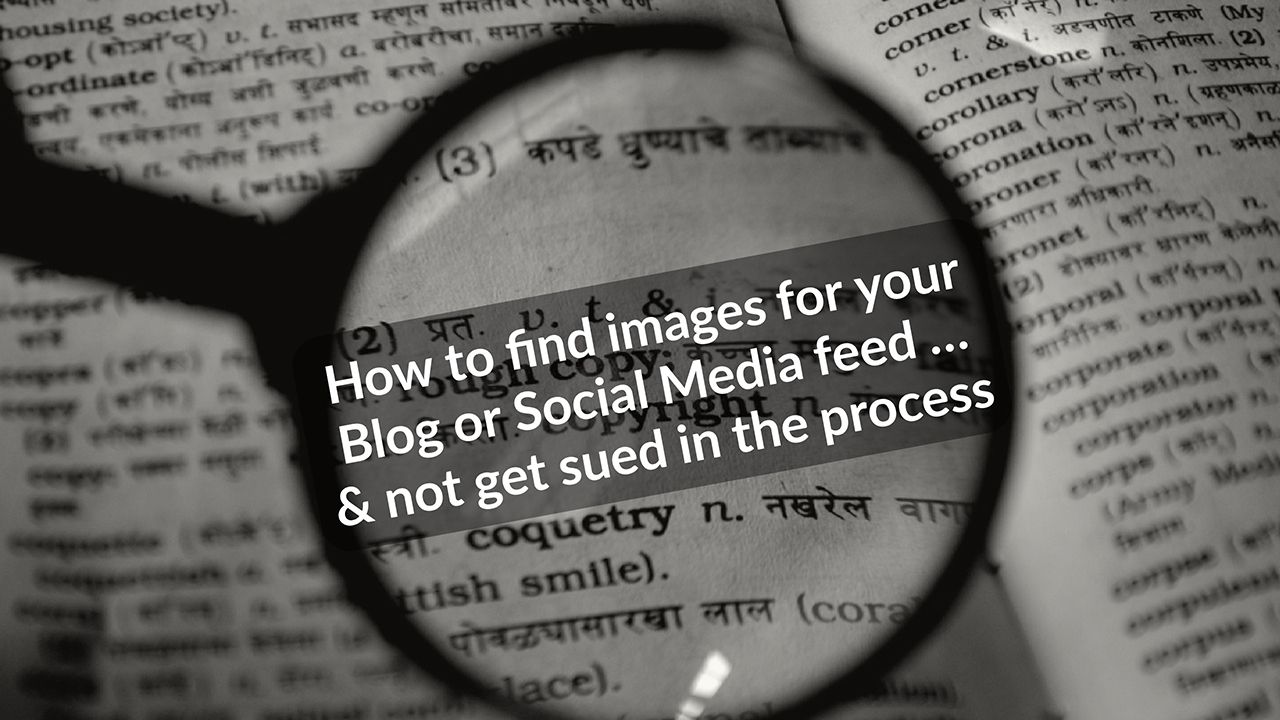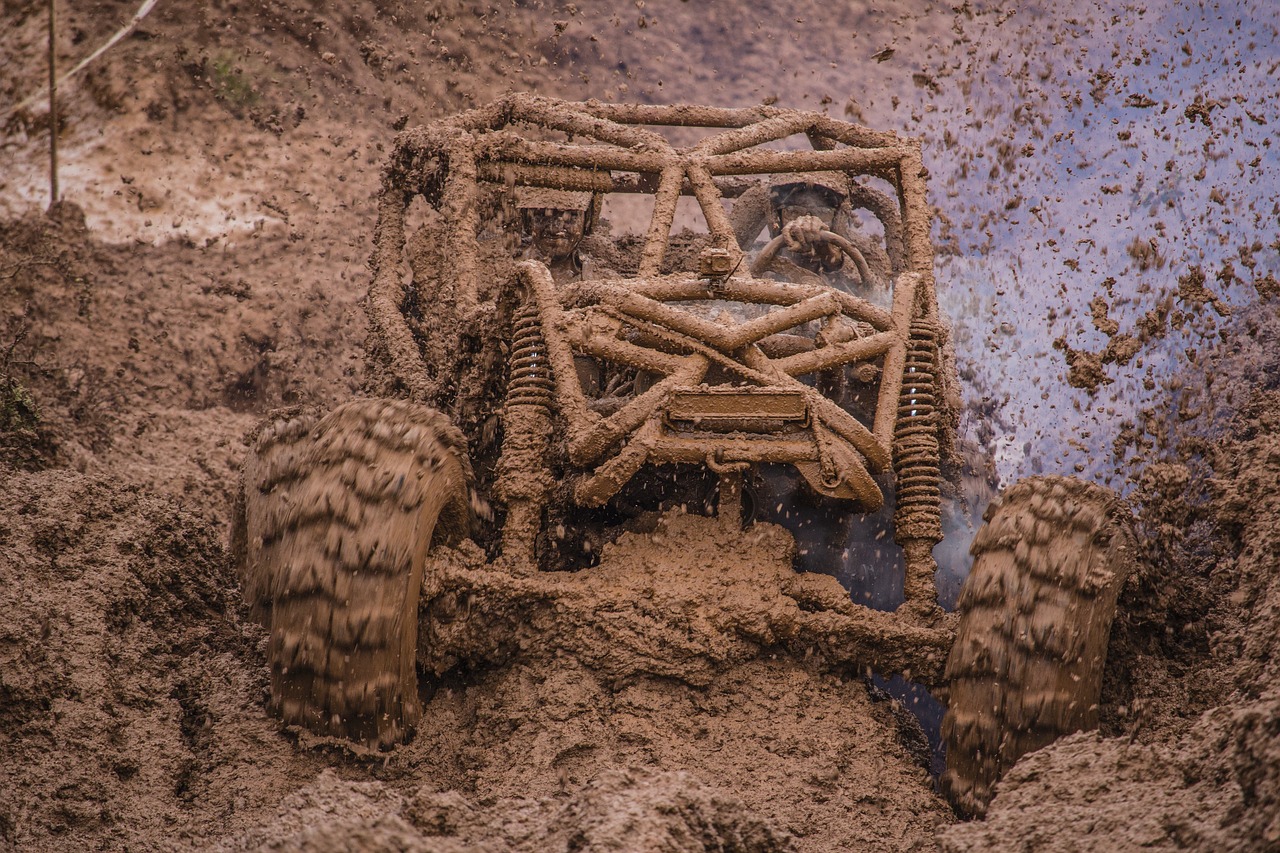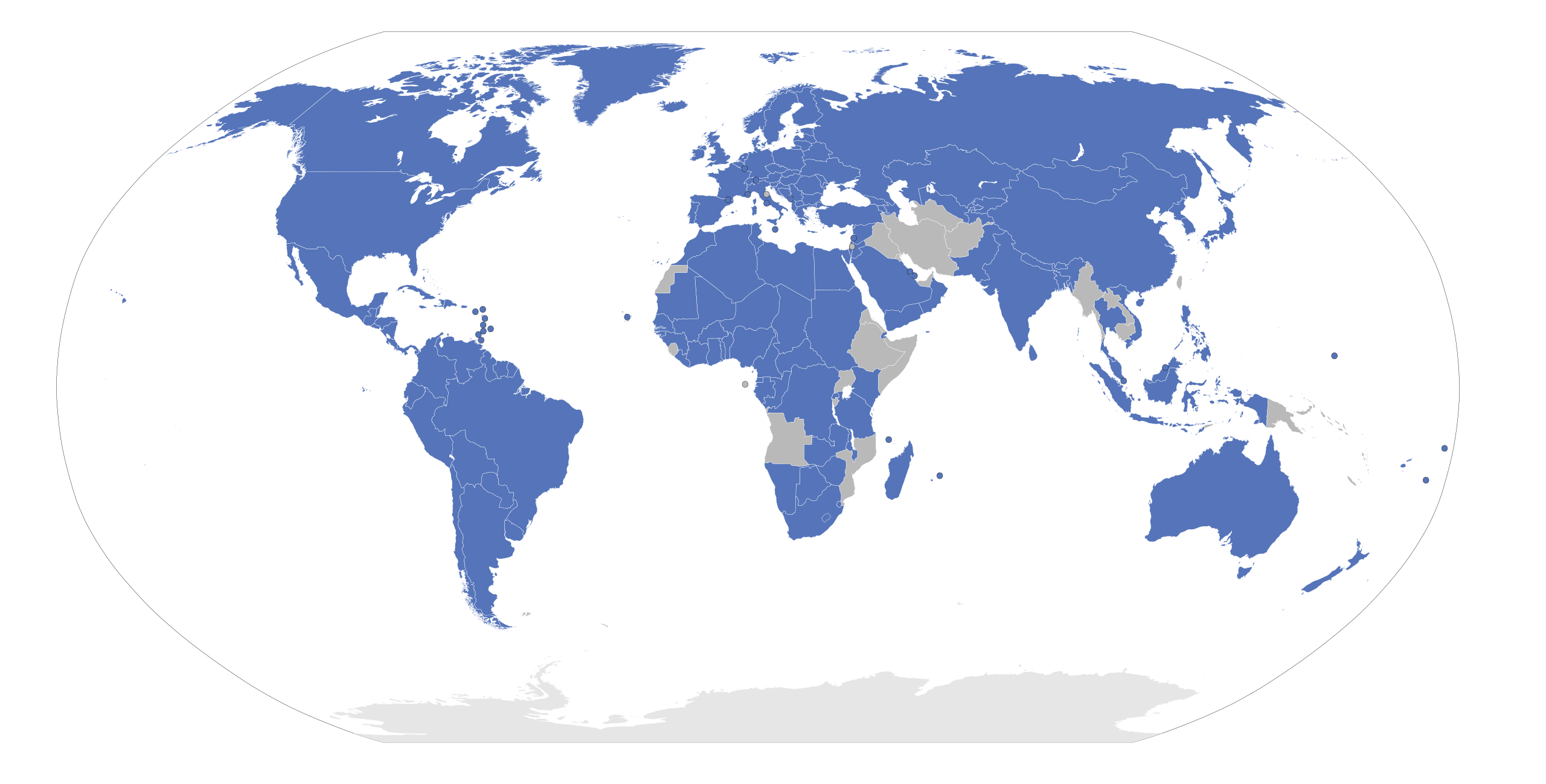How to find images for your blog or social media feed …
A quick guide on how to find high quality images for your blog and social media ... without falling foul of copyright infringement and getting sued.

Summary (for the TL;DR crowd :-) )
- Don't use any images on your blog or social media feeds unless you know for certain you're allowed to.
- Finding an image on Google or Twitter doesn't mean you can use it.
- Breaking this rule could cost you your blog/social media feed, and get you fined $150K.
- To be safe, use your own images or one from Pixabay, Unsplash or CleanPNG.
Intro
If you’re anything like me, when you write a post for your blog or social media feed, you like to put pictures in it. Pictures are worth a thousand words, and add zing to any post. And of course using eye candy is also great for getting more Likes & Retweets, or if we want to use techno-speak, pictures increase your reader engagement :-)
However there is a potential minefield lurking in here and that minefield is called copyright violation. If you use an image that belongs to someone else on your blog and you don’t have permission to do it, you can be sued. And it can be for a LOT of money.
Copyright Violation - Cost & Unexpected Consequences
If you’re not aware, image copyright violations typically involve what's known as triple damages. That is, if the copyright owner finds you using an image that you're not entitled to use, they'll claim three times the normal licence fee from you as a penalty. That doesn't sound too bad until you realise that the big agencies will charge £500+ to licence an image. Damages in that case would be £1,500 plus the original licence fee of £500. And depending on the country your in, it can get much higher. For example, in the US it can reach $150K if the violation is deemed to be wilful.
The other piece of bad news is that if you do this persistently on a blog or on social media account, you can suddenly find you don’t have one anymore. Blogs can be blocked or removed, and social media accounts deleted. If you read the T&Cs of Facebook or Instagram you’ll find that they all say that they’ll suspend or delete accounts that persistently violate copyright. Recovering from that if you’re guilty, even unintentionally, can be very difficult if not impossible. Better to avoid the minefield right from the start.
More bad news
Now for some more bad news - it can be surprising easy to fall foul of these laws. Finding an image on Google does not mean it’s available for you to use, nor does the defence that everyone else was doing it carry any weight with the courts. And while you can re-tweet images on Twitter, you cannot use them for other purposes.
But I found it on the web ...
so it must be OK to use it because it's already been published. No, finding a picture that is already being using on another website does not mean it's in the public domain and that you can re-use it. The European Court of Justice recently ruled on this in a case between a photographer and a school, ... the school lost.
But it can’t happen to me …
Wrong! If you think it can’t happen to you, read these examples where it DID happen to people. You’ll also learn that saying “Sorry!” and taking the offending image down will not fix the problem :-(
Legal Lesson Learned: Copywriter Pays $4,000 for $10 Photo
The $8,000 Mistake That All Bloggers Should Beware
Falling foul - A tale of six drinks and how people find copyright violations
An example of how easily it could go wrong. Some friends were going to use this image of six drinks in a newsletter. I happened to see a proof and got curious about the image. I decided to run a check. I used a very useful feature of Google Images that is not widely known that allows you to upload an image and use it as the “keyword” to search Google. Google showed that this image was copyrighted and was being made available on GettyImages. Fortunately they used a different images for the final newsletter :-).
Copyright holders use similar technologies to scan the entire internet for unlicensed use of their images and there are companies whose only function is to help photographers do this. If one of these companies find a violation with this technology they will pursue it, and they will go for as much money as they can as they normally get a cut of the settlement.
Royalty Free do not mean Free
If you do see an image you like and it says it's Royalty Free, it doesn't mean the image is free to use, it just means you don’t need to pay additional fees, above and beyond the initial fee to use it once you have licensed it.
No Copyright Notice does not mean it NOT Copyrighted
Do not assume that just because an image doesn’t have a copyright notice on it, it’s not copyrighted. The Berne Convention of 1886 does not require the display of a copyright notice for a work to be copyrighted, and it assumes that all works are copyrighted by default without the need for registration. So by default, all photos are copyrighted by the person who took the image, and yes, that applies to you and to the photos you’ve taken on your phone - you own the copyright to those :-). The Berne Convention of 1886 has been adopted by the vast majority of countries in the world.
There are some exceptions to this, but you really, really have to understand how the law works to appreciate them. Safest route - just assume all images are copyrighted.
Don't ever, EVER, use watermarked images in a blog or anywhere else
Don't use an image that has a watermark on it without the copyright owner's permission. EVER. Especially don't use images from stock agencies where they have the stock agency watermarks on them. I see this time and again in presentations people give, even public ones. This is just begging to be sued.
And now for the good news …
Avoiding the minefield is actually quite easy …
- Use your own photos, drawing or illustrations.
- Use images from a reputable Free-To-Use site.
- Use images that are in the public domain.
- Licence an image - it’s not as expensive as you might think.
Now lets examine these in a little more detail.
Use you’re own photos, drawing or illustrations.
Any original work you create yourself, is yours to do with as you please … and hence is safe to use. OK I’m assuming you’re not going to sue yourself for copyright violation, but who knows, you might be feeling bored one day :-). Note, the use of the word original here - tracing another person’s drawing, or photographing another person picture, does not count as original work.
Use images from a reputable Free-To-Use site
Have a look at one of the reputable Free-To-Use sites, such as Pixabay or Unsplash. Pixabay currently has 1.3 million images, and Unsplash has 400k. That's a lot of pictures, and they're very high quality images. Both of these sites put a lot of effort into curating their material to ensure that only high quality images are presented.
Sites I use:
- Pixabay - Great for photographs and vector images
- Unsplash - Great for photographs
- Pexels - Great for photographs
- CleanPNG - Great for transparent PNGs (used to be called KissPNG)
I am constantly amazed by the quality of the images I see on these sites. For example ...

Image source: lucuspapa/Pixabay
If you're looking for vector graphics or illustrations I'd start with Pixabay as they seem to have a better selection. Unsplash & Pexels are pretty much purely photographs. KissPNG is as the name says for PNG files.
Note: I haven't said "copyright free" here in this section as not all the images I've talked about here are. Someone can let you freely use an image without necessarily relinquishing their copyright. Of the two websites I've mentioned, Pixabay publishes copyright free images, Unsplash, on the other hand "grants you an irrevocable, nonexclusive copyright license". For practical purposes for blogging these amount to the same thing.
Use images that are definitely in the public domain (e.g. from Wikipedia, or some parts of the US government sites).
If you find an image you like on Wikipedia it's normally OK to use it, because "Wikimedia Commons only accepts free content, that is, images and other media files that are not subject to copyright restrictions which would prevent them being used by anyone, anytime, for any purpose." Source
Again, a lot of NASA materials can be used in blogs and on social media without issue because NASA does not generally copyright it's materials, but do check out their page on Media Usage Guidelines just to be sure your intended usage is OK.
Licence an image (it’s not as expensive as you might think)
Licensing an image doesn’t have to be expensive. I regularly use images from 123RF.com on my blogs and they cost me about £2 to licence. The image below was licensed from 123RF.com (Don’t reuse this image - you’re not licensed for it).

Copyright: generalfmv / 123RF Stock Photo
Icons
I pay a subscription for this service - it's very useful for getting icons for projects or websites. I'm sure there are free sites but I use this one :-)
- noun Project - Great for icons but you will need to be a member
A Final Courtesy
Always credit images you use, even if you get them from sites like Unsplash where they say it isn’t necessary. It courteous and it’s a nice thing to do for the person who created the image. It shows them that you appreciate their work.
Here endeth the lesson on image copyright violation.
Some further reading:
10 Big Myths about copyright explained
Copyright Infringement - I Didn’t Know
"The copyright bargain: a balance between protection for the artist and rights for the consumer." - Robin Gross
Header image credit: PDPics/Pixabay


